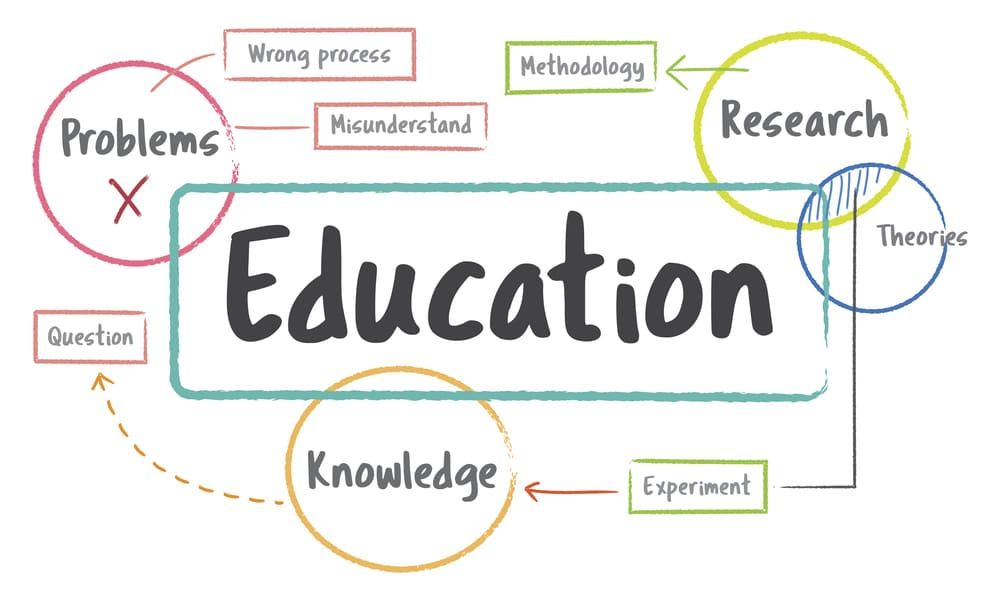Pros and Cons of AI in Education: A Comprehensive Guide to Benefits, Risks, and the Future of Learning

Introduction to AI in Education
Artificial Intelligence (AI) is no longer just a futuristic idea—it’s actively transforming how teachers teach and how students learn. In classrooms and online environments, AI is powering adaptive learning platforms, intelligent tutoring systems, automated grading tools, and even personalized curricula. These innovations are helping educators save time and giving students more tailored learning experiences.
Yet, alongside these opportunities come real challenges. The rise of AI in education raises questions about ethics, equity, student data privacy, and the role of human teachers. If used without care, AI risks widening achievement gaps or reducing the human connection that defines great education.
This comprehensive guide breaks down the pros and cons of AI in education, offering insights for educators, students, parents, and policymakers. By weighing the benefits against the risks, stakeholders can make informed choices on how to responsibly integrate AI into the future of learning.
Understanding the Basics of AI in Education

Definition and Scope
AI in education refers to the use of computer algorithms, machine learning, and data-driven technologies to enhance, automate, and personalize learning. It’s not just about replacing teachers but about augmenting human-led instruction with intelligent tools that make learning more effective and accessible.
Key applications of AI in education include:
- Adaptive learning platforms that tailor content to each student’s learning pace and style.
- Automated grading systems for faster, unbiased evaluation of assignments and assessments.
- Intelligent tutoring systems (ITS) that provide personalized guidance and real-time feedback.
- Chatbots and virtual assistants that support students with FAQs, scheduling, and reminders.
- Predictive analytics to identify at-risk students and optimize academic pathways.
Evolution and Adoption
The adoption of AI in education has accelerated due to advances in technology, increased internet access, and the need for scalable digital learning solutions. EdTech companies, universities, and K–12 schools are investing heavily in AI-driven platforms, from smart classrooms to online learning assistants. While some institutions are already reaping the benefits of AI-powered learning, others remain in experimental stages—balancing the potential for innovation against questions of cost, pedagogy, and long-term impact.
The Pros of AI in Education

AI’s promise in education lies in its ability to revolutionize learning experiences, making them more personalized, efficient, and accessible. Below are the key advantages that AI brings to educational environments.
1. Personalized Learning Experiences
One of AI’s most celebrated benefits is its capacity to deliver personalized learning at scale. By analyzing data on individual students’ performance, learning styles, and progress, AI-powered systems can:
- Adapt content in real-time: Students receive materials tailored to their current understanding, pacing, and interests.
- Offer targeted feedback: AI identifies strengths and weaknesses, helping students focus on areas needing improvement.
- Facilitate mastery learning: Learners can move forward only when they’ve demonstrated understanding, reducing gaps in knowledge.
Example: Platforms like DreamBox and Knewton use AI algorithms to adjust math problems or reading passages in response to a student’s answers, promoting continuous engagement and improvement.
2. Enhanced Efficiency for Educators
AI can automate many time-consuming administrative and instructional tasks, allowing educators to focus more on teaching and mentoring. Key efficiency gains include:
- Automated grading: AI systems can assess multiple-choice, fill-in-the-blank, and even short-answer questions with speed and consistency.
- Scheduling and resource allocation: Tools that optimize class schedules, room assignments, and learning resource distribution.
- Streamlined communication: Chatbots answer routine questions, freeing up teachers’ time.
Example: Tools like Gradescope and Turnitin use AI to expedite grading and plagiarism detection, enabling faster feedback for students.
3. Increased Accessibility and Inclusion
AI can help break down barriers to education for students with diverse needs, including those with disabilities or in underserved communities. Benefits include:
- Assistive technologies: AI-powered speech recognition, text-to-speech, and translation tools support learners with visual, auditory, or language challenges.
- Remote learning support: Intelligent tutoring and virtual classrooms bridge gaps in teacher availability, especially in rural or low-resource regions.
- Customized content: AI can generate materials at various reading levels or in multiple languages for greater inclusivity.
Example: Microsoft’s Immersive Reader uses AI to improve reading comprehension for students with dyslexia or other learning differences.
4. Data-Driven Decision Making
AI provides actionable insights by analyzing vast amounts of data from student interactions, assessments, and engagement metrics. These insights are made possible by technologies like large language models (LLMs), which can interpret patterns, understand natural language, and generate predictions at scale. This empowers educators to:
- Identify at-risk students: Early warning systems flag learners who may need additional support.
- Optimize curricula: Data reveals which teaching methods or materials are most effective.
- Measure educational outcomes: Continuous analysis supports evidence-based policy and practice.
5. 24/7 Learning and Support
Unlike traditional classrooms constrained by schedules, AI-driven tools offer round-the-clock access to learning resources and support services:
- On-demand tutoring: Virtual tutors provide explanations and practice problems anytime.
- Instant feedback: Students receive answers to questions immediately, facilitating independent learning.
- Scalable support: AI chatbots can handle thousands of student queries simultaneously.
Example: Khan Academy’s AI-powered chatbots answer questions and guide learners through complex concepts, regardless of time zone or classroom hours.
6. Fostering Creativity and Innovation
AI can inspire new ways of learning, teaching, and problem-solving by:
- Generating creative content: AI tools help students brainstorm, write, and visualize ideas.
- Simulating real-world scenarios: Virtual labs and simulations let students experiment safely.
- Encouraging critical thinking: Adaptive challenges and open-ended projects require students to think deeply and creatively.
Example: AI-powered platforms like Google’s Teachable Machine enable students to create and train their own AI models, fostering hands-on learning.
The Cons of AI in Education

AI in education introduces serious risks alongside its advantages. Recognizing these challenges is essential for schools, educators, and policymakers aiming for responsible use.
1. Loss of Human Interaction and Social Skills
AI tools can’t replicate the empathy, mentorship, and emotional intelligence that teachers provide. Risks include:
- Reduced personal connection: Students may feel unsupported without real teacher-student relationships.
- Diminished collaboration: AI cannot fully replace classroom discussions, peer learning, or group work.
- Impaired emotional growth: Young learners especially benefit from human role models and social cues.
Example: Heavy reliance on AI-driven virtual classrooms may reduce teamwork and leadership opportunities.
2. Bias and Fairness Issues
AI reflects the quality of its training data and algorithms, making bias a real threat:
- Algorithmic bias can disadvantage certain groups in grading or admissions.
- Lack of transparency makes it hard to audit or correct unfair outcomes.
- Unequal access means wealthier students often benefit more from AI tools.
Example: Automated grading platforms have been criticized for scoring bias against specific demographics.
3. Privacy and Security Concerns
AI-driven learning platforms collect vast student data, raising red flags around:
- Sensitive data exposure from breaches or poor data handling.
- Surveillance risks when monitoring student activity becomes invasive.
- Unclear consent about how data is stored, shared, or used.
Example: AI-based exam proctoring has sparked debates over surveillance and student privacy rights.
4. Dependence on Technology and Equity Gaps
Without digital literacy skills or access to proper devices, many students and teachers risk being left behind:
- Students in underserved areas face wider learning gaps without reliable internet or devices.
- Teachers need AI training to maximize its benefits in class.
Example: During COVID-19, students without AI-enabled tools fell behind peers with better access.
5. Threats to Academic Integrity
AI text generators blur the line between learning support and plagiarism:
- Essays, summaries, or homework answers can be auto-generated with minimal effort.
- Plagiarism detection struggles to flag advanced AI content.
- Academic honesty policies are challenged by evolving technology.
Example: AI essay writers make it easier for students to submit polished but non-original work, raising concerns over authenticity.
6. High Implementation and Maintenance Costs
AI adoption requires significant investment that many schools can’t afford:
- Robust infrastructure: devices, networks, and platforms.
- Regular updates and technical maintenance.
- Hidden costs like training, licenses, and support.
Example: Smaller schools or underfunded districts often struggle to sustain AI initiatives, creating unequal opportunities.
Real-World Examples of AI in Education

AI in education is not just theory—it’s already transforming classrooms, tutoring, administration, and accessibility. Here are some notable real-world case studies:
Personalized Learning Platforms
- DreamBox Learning: Adjusts math lessons for K-8 students in real time, tailoring challenges and support to each learner’s responses.
- Duolingo: Uses machine learning to personalize language lessons, track progress, and recommend review topics for more effective learning.
Intelligent Tutoring and Virtual Assistants
- Khan Academy’s AI Tutor: Provides instant feedback, hints, and explanations, helping students overcome learning obstacles step by step.
- IBM Watson Tutor: Analyzes classroom data, suggests differentiated instruction strategies, and answers student questions.
Administrative Automation
- Gradescope: Automates grading of assignments and exams while allowing instructors to review and adjust AI-generated results.
- University Chatbots: Schools like Georgia State use AI chatbots to handle admissions, financial aid, and registration questions, improving student support.
Accessibility and Special Education
- Microsoft Immersive Reader: Assists students with dyslexia by reading text aloud, changing fonts, and simplifying complex sentences.
- AI-Powered Speech Recognition: Tools like Otter.ai transcribe lectures in real time, supporting students with hearing impairments.
Ethical Considerations and Policy Implications

The integration of AI into educational systems raises critical ethical questions and policy challenges that must be addressed to ensure responsible use.
Data Privacy and Security
- Consent and transparency: Schools must clearly communicate how student data is collected, used, and protected.
- Compliance: Adherence to data protection regulations like FERPA (in the U.S.) and GDPR (in Europe) is essential.
Fairness and Bias Mitigation
- Regular audits: AI systems should be evaluated for bias and fairness, with mechanisms in place to address disparities.
- Inclusive design: Involving diverse stakeholders in AI development helps prevent the amplification of societal biases.
Teacher and Student Empowerment
- Professional development: Ongoing training for educators is crucial to effectively integrate AI tools and interpret AI-driven insights.
- Student agency: AI should augment, not replace, student decision-making and creativity.
Accountability and Oversight
- Clear guidelines: Policymakers must establish standards for AI use, including accountability for errors or adverse impacts.
- Stakeholder engagement: Continuous dialogue with parents, students, teachers, and technologists ensures that AI aligns with educational values.
The Future of AI in Education: Opportunities and Challenges Ahead
As artificial intelligence continues to evolve, its influence on education will only deepen. The future holds immense promise—more personalized, efficient, and engaging learning—but also introduces new complexities that educators and policymakers must navigate.

Emerging Trends
- AI-powered formative assessment: Real-time analysis of student work to guide immediate teaching adjustments.
- Virtual and augmented reality: AI-driven simulations that deliver immersive, hands-on learning experiences.
- Emotion AI: Systems capable of detecting student emotions and engagement levels to personalize instruction and support.
Navigating the Path Forward
- Balancing efficiency with humanity: AI should support educators without replacing meaningful teacher-student relationships.
- Ensuring equitable access: Closing the digital divide is essential to prevent widening educational inequalities.
- Promoting lifelong learning: Schools must help students develop critical thinking, adaptability, and digital literacy for an AI-driven future.
Weighing the Pros and Cons of AI in Education
Artificial intelligence is reshaping education, offering innovative tools to personalize learning, streamline administrative work, and expand access for students of all backgrounds. From adaptive tutoring systems and 24/7 virtual support to data-driven insights that help teachers improve outcomes, AI has the power to transform how knowledge is delivered and absorbed.
However, these benefits come with equally important challenges. Concerns about bias in algorithms, student data privacy, loss of meaningful human interaction, and unequal access to technology cannot be ignored. If left unaddressed, these issues could undermine trust and widen educational gaps.
The future of AI in education depends on responsible adoption. Thoughtful implementation should safeguard student well-being, prioritize equity, and preserve the irreplaceable role of teachers as mentors and guides. By striking a balance between innovation and caution, schools and policymakers can ensure that AI becomes a powerful ally—enhancing creativity, critical thinking, and lifelong learning for all students.
Frequently Asked Questions (FAQs) About AI in Education
Is AI replacing teachers in the classroom?
No, AI is not replacing teachers but rather augmenting their roles. While AI can automate certain tasks and provide personalized learning experiences, human educators remain essential for mentorship, emotional support, and fostering critical thinking and creativity.
How can schools ensure AI is used ethically?
Schools should adopt clear policies regarding data privacy, bias mitigation, and transparency. Involving teachers, parents, and students in decision-making, regularly auditing AI systems, and providing professional development are important steps toward ethical AI use.
What are the main barriers to AI adoption in education?
Key barriers include high implementation costs, lack of digital infrastructure, digital literacy gaps among teachers and students, and concerns about data privacy and bias.
Can AI help students with special needs?
Yes, AI-powered assistive technologies can greatly benefit students with disabilities by providing tailored support, accessible content, and tools that accommodate diverse learning needs.
Will AI widen the digital divide?
If not implemented thoughtfully, AI could exacerbate inequalities by favoring students with better access to technology. Ensuring equitable access to devices, connectivity, and training is essential to prevent this outcome.
Forward-thinking educators are tapping into the power of AI-driven chatbots to support student inquiry and using AI art tools to spark imagination in the classroom—real-world examples of how intelligent technology is reshaping not just how we teach, but how students learn and create.
Further Reading and Resources
- AI in Schools: Pros and Cons – University of Illinois
- Artificial Intelligence in Education: Risks, Opportunities, and What’s Next – The Good Men Project
- Pros and Cons of AI in Education – American University
- Advantages and Disadvantages of AI in Education – University Canada West
- 5 Pros and Cons of AI in the Education Sector – Walden University
By understanding the pros and cons of AI in education, stakeholders can take informed steps to harness its benefits while safeguarding against its risks, ensuring that the future of learning is both innovative and inclusive.





